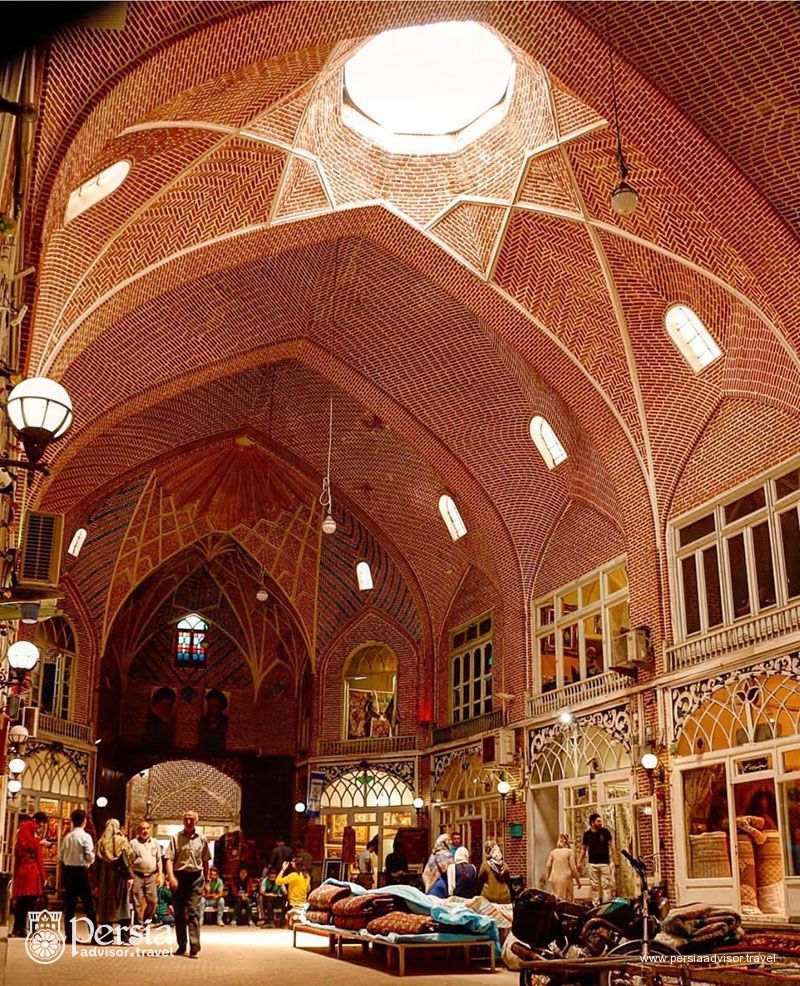The Iranian traditional bazaars are almost active in all cities of Iran and some of them like Tabriz bazaar have global value.
By the formation of civilization, cities and villages, good exchange became a crucial part of culture of societies and the bazaars gradually appeared.

Grand Bazar of Tabriz, Tabriz, Azerbaijan Sharqi (East) Province, Iran
Photo by Rei nikoo via Wikimedia Commons / CC-BY-SA-4.0
Bazaar is an economic-social unit which can be architecturally indoor or outdoor, periodic or permanent, geographically urban or suburban. In large cities, bazaar is an indoor complex with sale units and relevant buildings which are held permanently.
The bazaars start from out of city gates and continue till the city center. The structure of market consisted of different parts including: rasteh (Part of a market containing a series of shop) as the main elements which create charsou once intersecting each other, rasteh (where guilds are located), corridor and hall (trading company), khanbaar, as a place to store and analyze goods, store, homogeneous and qeysarie trading company, as the workplace of craftsmen like jewelers. There were some others units like mosques, bathrooms, café, restaurants, service or cultural units to fulfill needs of traders, seller and buyers who use the services of a bazaar.

Grand Bazar of Tabriz, Tabriz, Azerbaijan Sharqi (East) Province, Iran
Photo by Kianooshmohebian via Wikimedia Commons / CC-BY-SA-4.0
Bazaar, an urban news center
Bazaars as an economic- social unit had close relation with society since it was always the urban news center, official information and news were firstly published in main bazaar and then spread all over the city. Holding official ceremonies like national- religious celebrations or mourning is another representation of cultural relation between bazaar and populace. Norwruz is an occasion which annually boosts bazaars, on the other hand closing bazaars to take part in mourning or any other important religious occasion has an old background. Also, bazaar and some of its rasteh like bookseller’s rasteh is the circle of scientists, philosophers, poets, and other thinkers, sometimes these people were among craftsmen. Besides, in all political- social movements like Mashrouteh movement which occurred in Iran a trace of marketers can be observed.
The indoor bazaar of Tabriz has been registered in UNESCO as the representative of Iran in bazaar architecture and economic – traditional system.
All cities of Iran have traditional bazaars like Tehran bazaar, Isfahan bazaar, Shiraz bazaar and Tabriz bazaar. The architectural structures which have attracted tourists in addition to preserving economic approach.
The indoor bazaar of Tabriz has been registered in UNESCO as the representative of Iran in bazaar architecture and economic – traditional system.





